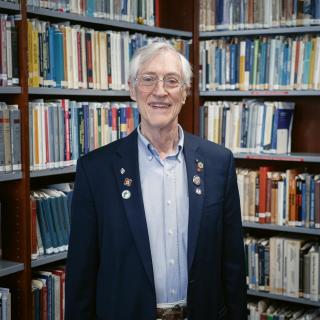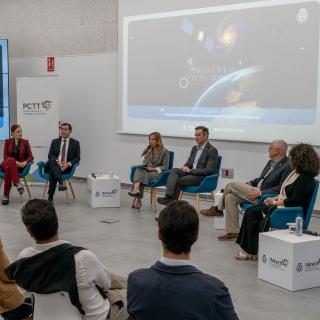It may interest you
-
 The Museo de la Ciencia y el Cosmos, part of the Organismo Autónomo de Museos y Centros del Cabildo de Tenerife, will host a conference by the astrophysicist and 2006 Nobel Laureate in Physics, John Mather, entitled ‘Unsolved mysteries of physics and astronomy’, on Friday 9th May. Mather receives this week the recognition as Doctor Honoris Causa of the Universidad de La Laguna (ULL) with the sponsorship of the researcher of the Instituto de Astrofísica de Canarias (IAC) and Doctor Honoris Causa of the ULL, John Beckman. Mather's lecture, which will be in English, will be presented by theAdvertised on
The Museo de la Ciencia y el Cosmos, part of the Organismo Autónomo de Museos y Centros del Cabildo de Tenerife, will host a conference by the astrophysicist and 2006 Nobel Laureate in Physics, John Mather, entitled ‘Unsolved mysteries of physics and astronomy’, on Friday 9th May. Mather receives this week the recognition as Doctor Honoris Causa of the Universidad de La Laguna (ULL) with the sponsorship of the researcher of the Instituto de Astrofísica de Canarias (IAC) and Doctor Honoris Causa of the ULL, John Beckman. Mather's lecture, which will be in English, will be presented by theAdvertised on -
 El Cabildo y el IAC fabricarán la primera constelación de satélites canaria para observar y proteger el Archipiélago desde el espacioAdvertised on
El Cabildo y el IAC fabricarán la primera constelación de satélites canaria para observar y proteger el Archipiélago desde el espacioAdvertised on -
 An international team of astronomers, including researchers from the IAC, have performed a unique cosmic test - measuring the mass of an ancient star using two entirely different methods, finding agreement to within just 1.4%. This result marks a milestone in our ability to determine the ages of old stars and use them as living fossils to study the Milky Way’s distant past. The team analysed the red giant in the binary system KIC 10001167 using two independent approaches: firstly, by measuring the brightness and radial velocity variations due to the orbital motion of the binary, and secondlyAdvertised on
An international team of astronomers, including researchers from the IAC, have performed a unique cosmic test - measuring the mass of an ancient star using two entirely different methods, finding agreement to within just 1.4%. This result marks a milestone in our ability to determine the ages of old stars and use them as living fossils to study the Milky Way’s distant past. The team analysed the red giant in the binary system KIC 10001167 using two independent approaches: firstly, by measuring the brightness and radial velocity variations due to the orbital motion of the binary, and secondlyAdvertised on
